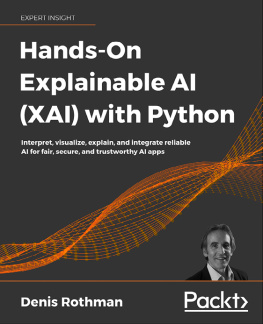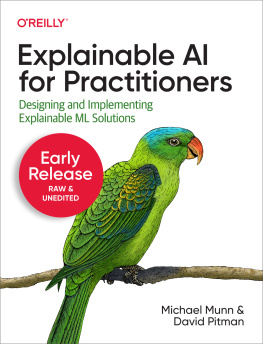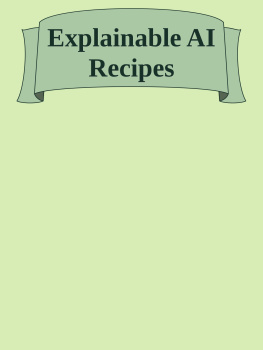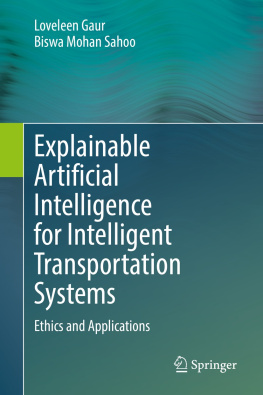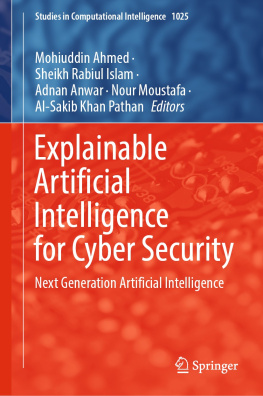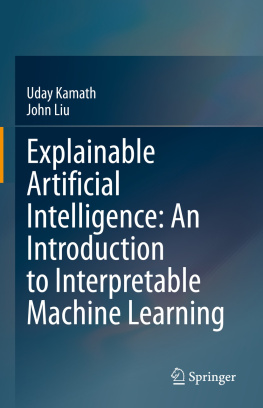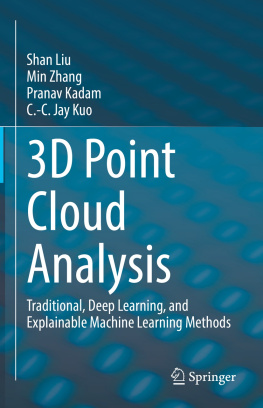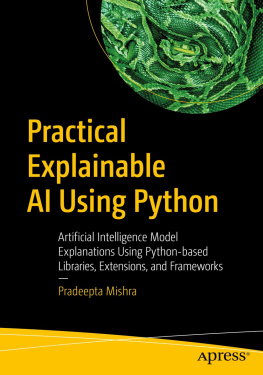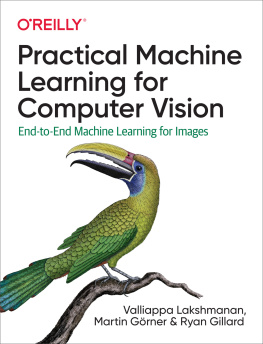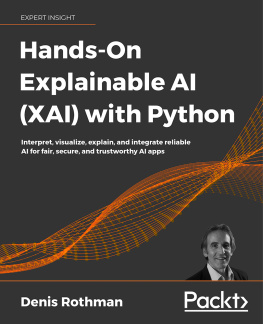Aditya Bhattacharya - Applied Machine Learning Explainability Techniques: Make ML models explainable and trustworthy for practical applications using LIME, SHAP, and more
Here you can read online Aditya Bhattacharya - Applied Machine Learning Explainability Techniques: Make ML models explainable and trustworthy for practical applications using LIME, SHAP, and more full text of the book (entire story) in english for free. Download pdf and epub, get meaning, cover and reviews about this ebook. year: 2022, publisher: Packt Publishing, genre: Children. Description of the work, (preface) as well as reviews are available. Best literature library LitArk.com created for fans of good reading and offers a wide selection of genres:
Romance novel
Science fiction
Adventure
Detective
Science
History
Home and family
Prose
Art
Politics
Computer
Non-fiction
Religion
Business
Children
Humor
Choose a favorite category and find really read worthwhile books. Enjoy immersion in the world of imagination, feel the emotions of the characters or learn something new for yourself, make an fascinating discovery.
- Book:Applied Machine Learning Explainability Techniques: Make ML models explainable and trustworthy for practical applications using LIME, SHAP, and more
- Author:
- Publisher:Packt Publishing
- Genre:
- Year:2022
- Rating:5 / 5
- Favourites:Add to favourites
- Your mark:
Applied Machine Learning Explainability Techniques: Make ML models explainable and trustworthy for practical applications using LIME, SHAP, and more: summary, description and annotation
We offer to read an annotation, description, summary or preface (depends on what the author of the book "Applied Machine Learning Explainability Techniques: Make ML models explainable and trustworthy for practical applications using LIME, SHAP, and more" wrote himself). If you haven't found the necessary information about the book — write in the comments, we will try to find it.
Key Features
- Explore various explainability methods for designing robust and scalable explainable ML systems
- Use XAI frameworks such as LIME and SHAP to make ML models explainable to solve practical problems
- Design user-centric explainable ML systems using guidelines provided for industrial applications
Book Description
Explainable AI (XAI) is an emerging field that brings artificial intelligence (AI) closer to non-technical end users. XAI makes machine learning (ML) models transparent and trustworthy along with promoting AI adoption for industrial and research use cases.
Applied Machine Learning Explainability Techniques comes with a unique blend of industrial and academic research perspectives to help you acquire practical XAI skills. Youll begin by gaining a conceptual understanding of XAI and why its so important in AI. Next, youll get the practical experience needed to utilize XAI in AI/ML problem-solving processes using state-of-the-art methods and frameworks. Finally, youll get the essential guidelines needed to take your XAI journey to the next level and bridge the existing gaps between AI and end users.
By the end of this ML book, youll be equipped with best practices in the AI/ML life cycle and will be able to implement XAI methods and approaches using Python to solve industrial problems, successfully addressing key pain points encountered.
What you will learn
- Explore various explanation methods and their evaluation criteria
- Learn model explanation methods for structured and unstructured data
- Apply data-centric XAI for practical problem-solving
- Hands-on exposure to LIME, SHAP, TCAV, DALEX, ALIBI, DiCE, and others
- Discover industrial best practices for explainable ML systems
- Use user-centric XAI to bring AI closer to non-technical end users
- Address open challenges in XAI using the recommended guidelines
Who this book is for
This book is designed for scientists, researchers, engineers, architects, and managers who are actively engaged in the field of Machine Learning and related areas. In general, anyone who is interested in problem-solving using AI would be benefited from this book. The readers are recommended to have a foundational knowledge of Python, Machine Learning, Deep Learning, and Data Science. This book is ideal for readers who are working in the following roles:
- Data and AI Scientists
- AI/ML Engineers
- AI/ML Product Managers
- AI Product Owners
- AI/ML Researchers
- User experience and HCI Researchers
Table of Contents
- Foundational Concepts of Explainability Techniques
- Model Explainability Methods
- Data-Centric Approaches
- LIME for Model Interpretability
- Practical Exposure to Using LIME in ML
- Model Interpretability Using SHAP
- Practical Exposure to Using SHAP in ML
- Human-Friendly Explanations with TCAV
- Other Popular XAI Frameworks
- XAI Industry Best Practices
- End User-Centered Artificial Intelligence
Aditya Bhattacharya: author's other books
Who wrote Applied Machine Learning Explainability Techniques: Make ML models explainable and trustworthy for practical applications using LIME, SHAP, and more? Find out the surname, the name of the author of the book and a list of all author's works by series.

